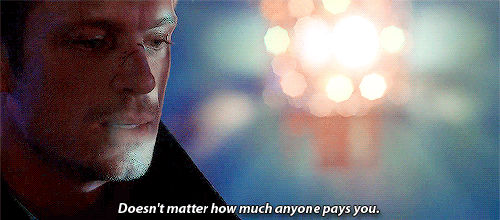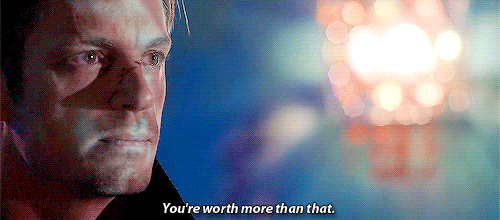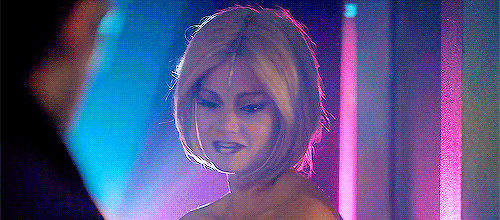Text
Cosmic Piece of Pi!
Did you know that pi is involved nearly anywhere you look? We’re not talking about your favorite pastry! Pi (also written as the Greek letter 𝞹, or the number 3.14159…) is an irrational number, which means it can’t be written as a simple fraction like ½. It is the ratio of a circle’s circumference (the distance around its edge) to its diameter (the distance across it) and will always be the same number, regardless of the circle’s size. Here are some places you can find pi in the universe around us!

Our Transiting Exoplanet Survey Satellite, TESS, watches slices of the sky in its hunt for worlds outside our solar system — how many exoplanets are in its night-sky pie? Last July, TESS scientists created a mosaic of 208 images of the southern sky. At that time, it contained 29 confirmed and 1,000 possible exoplanets, and we’re still studying the data to find more. Since this awe-inspiring image is of the southern hemisphere (or half of a 3D circle), there will always be pi! Every slice contains something delicious for scientists to study.

Pi recently played a crucial role in new discoveries about Alpha Draconis, a well-studied pair of stars. After discovering these stars regularly eclipse each other, pi helped scientists learn more about them. Scientists detected the eclipses while monitoring the brightness of Alpha Draconis for periodic dips that could’ve been caused by planets passing between the star and us. Instead of a planet, though, researchers found that its smaller partner in crime was passing in between us and the larger star for about six hours at a time! 💫
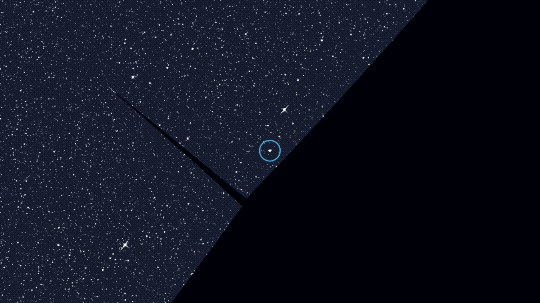
Pi comes in handy as we learn more about these two stars. Knowing the percentage of the decrease in Alpha Draconis’ light and the formula for the area of a circle (A=𝞹r2 — or area equals pi times the square of the circle’s radius), scientists can predict the sizes of both stars. Because stars typically orbit in an elliptical (or oval) shape, pi also helps scientists use the detection of these eclipses to figure out the orbits of the two stars!

So far we’ve seen pi in many places! But it’s also interesting to look at where pi can’t be found! We mentioned earlier that many orbit calculations involve pi … but not every one does! Pi does not factor into calculations of hyperbolic orbits — orbits that aren’t complete, or don’t return to where they started — the same way that it does with elliptical orbits! This is most commonly seen with comets. While many comets orbit normally in our solar system, some oddballs just pass through, like the interstellar ‘Oumuamua that zipped passed us in 2017. ☄️
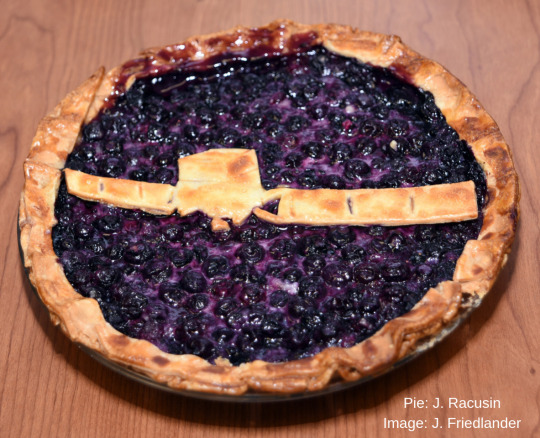
Perhaps the most popular place you may find pi is in the shape of a typical pie! While NASA’s Fermi Gamma-ray Space Telescope studies gamma-rays, and not blueberries, we think this cool Fermi pie is worth sharing for Pi Day!
Find more ways scientists look up at the night sky and use pi here. And now, don’t be irrational, and go have some pi(e)! 🥧
Make sure to follow us on Tumblr for your regular dose of space: http://nasa.tumblr.com
4K notes
·
View notes
Text
5 Ways NASA Technology is Shaping the Transportation of Tomorrow
We have always been in the transportation business, whether launching astronauts to the Moon or improving airplanes to make them fly faster and safer on less fuel. And whether directly – like more aerodynamic wings for passenger jets – or indirectly – like more comfortable driver seats in sedans – this is yet another way our innovations benefit the public.
Today, the world of transportation is on the brink of some big changes. Drones are poised to make more efficient deliveries, crop surveillance and even disaster relief efforts. Taxis may soon take to the skies as well. And self-driving cars are ever closer to reality.
As we release our latest edition of NASA Spinoff, our yearly publication that celebrates the many ways our technology helps people on Earth, let’s take a closer look at some ways we’re helping augment transportation — and keeping everyone on the roads and in the skies safe.
1. Better data for driverless navigation

If cars are going to drive themselves, they need to be able to “see” and assess the world around them, from other cars to pedestrians and bicyclists to a construction cone in the road. This is accomplished with the help of 3D cameras, or light detection and ranging (lidar), which sends out laser pulses and calculates where obstacles are by how long it takes that laser to bounce back.
But that, says engineer Farzin Amzajerdian at our Langley Research Center, is like building a 3D picture one pixel at a time. Instead, a new kind of lidar grabs a full array of pixels all at once. This “flash lidar” is faster and, because it has fewer moving parts, more reliable. It sailed through initial tests for possible use on a future Moon lander, and our partner has also sold the technology to a major car parts manufacturer, for autonomous cars.
2. Opening the airspace for drones

Air traffic control has largely been a human operation so far, with people in control towers actively directing all 50,000 or so flights daily across the United States. But add in drones, and humans won’t be able to keep up: experts estimate there will soon be millions of aircraft in flight every day.
We’re helping automate and streamline flight control, working with the Federal Aviation Administration (FAA) and private companies to build the new technology needed to manage the anticipated challenges. Among other advances as a result, one company has built a platform used at airports, by air traffic controllers, and by drone operators around the world to more easily file flight plans, view the airspace, get clearance in restricted areas and more.
3. Software modeling for air taxis

It may sound like something from the Jetsons, but real people are imagining the technology needed to make flying taxis a thing. And they’re probably not going to look anything like the passenger planes that we’re used to.
But when you start with a totally new design, there are all sorts of variables, including how much it will weigh. When it comes to flying, weight is a critical factor. For one thing, a heavier craft needs more fuel, but more fuel makes it even heavier. And all that weight stresses the structure, which means reinforcing it (more weight again!). Do it wrong, and all these factors cycle endlessly until you have something too heavy to get off the ground.
New software, designed with our help, generates fast and accurate weight estimates of novel aircraft designs, helping engineers figure out what works and how to make it better. Among other customers? UberElevate, which is trying to take rideshares to the skies.
4. More nimble hand controls

We’ve even played a part in improving different kinds of joysticks, for everything from planes and video games, over the years. We had to because—especially in the early days of space travel—spacesuits were pretty unwieldy under the high g forces of launch and re-entry, so we needed to develop easy-to-use hand controls.
One former astronaut, Scott Parazynski, had acquired a wealth of experience training on and using NASA joysticks for jobs like maneuvering the International Space Station’s robotic arm. He realized similar technology could have even more of an impact on Earth. Parazynski, who is also a medical doctor, envisions improving robotic surgery with the new joystick he created; in the meantime, it’s already on the market for drones, making it easier than ever to use them to record aerial video, inspect a gas pipeline or even assess damage after a hurricane.
5. Helping farmers get the full picture

The “bird’s-eye view” is an expression for a reason: flying overhead provides a perspective you just can’t get with two feet planted on the ground. For the first time ever, we are going to get that bird’s eye view on Mars, and the same expertise that got us there is also giving farmers a new way to keep track of their crops.
The Mars Helicopter is poised to hitch a ride to the Red Planet with our latest rover, Perseverance, later this year. Designing it was a challenge: because there is so little air to provide lift on Mars, we needed something incredibly light (less than four pounds!) with large rotors that spin incredibly fast (nearly 3,000 times per minute).
We teamed up with a company we’ve worked with in the past on high-altitude, solar-powered, unmanned flyers. That company had something else in the works, using the same expertise: a drone equipped with two high-res cameras to capture images of crops as it flies overhead. The data from these images tells farmers where plants are thriving and where they’re not, informing them where they might need more (or less) water or fertilizer.
You can learn more about all these innovations, and dozens more, in the 2020 edition of NASA Spinoff. Read it online or request a limited quantity print copy and we’ll mail it to you!
Make sure to follow us on Tumblr for your regular dose of space: http://nasa.tumblr.com.
751 notes
·
View notes
Text
“That’s what I do. Watch movies and read. Sometimes I even pretend to write, but I’m not fooling anyone. Oh, and I go to the mailbox.”
— Nicole Krauss (via quotemadness)
2K notes
·
View notes
Text
what if you paid me 25$(or more) to draw your portrait haha just kidding................unless 👀

hiiiii i really need some quick money right now and regular commissions take A LOT of time to finish so….quick portraits anyone??
i call it ‘ah fuck im not spending more than one evening on it’(and i’m actually not going to) commissions. all of the three examples are done from photos so i think this is how this option would work best.
SO maybe you want your own portrait as a treat?? your partner?? literally anyone?? all i need is your money and a photo of decent quality thatse et. more than one person is double the price sorry i don’t make the rules.. well i do but i don;t <3
thank u. reblogs are appreciated xx
2K notes
·
View notes
Video
youtube
TEMPORADA 7 - ASÍ SE GRABA #WALLYOPINA - MADURO SE BURLA DE DUQUE
0 notes
Photo

Experimento Rosenhan: ¿cómo distinguir a un loco de un cuerdo?
¿Cuál es el significado de la cordura? ¿Qué tan confiables son los diagnósticos médicos que hacen la distinción entre cordura y locura? En el año de 1969, el psicólogo Dr. David Rosenhan, de la Universidad de Stanford, ideó un experimento único en su intento por responder este viejo enigma. El propio Rosenhan y otros siete voluntarios que gozaban de una perfecta salud mental se infiltraron en varias instituciones psiquiátricas entre 1969 y 1972 fingiendo estar locos para comprobar si los médicos los acusaban de engañarlos. Sin embargo, los médicos jamás lo notaron.
El experimento
En el experimento Rosenhan, ocho voluntarios completamente cuerdos ingresaron a 12 diferentes hospitales psiquiátricos, todos dirigidos por el aparato Estatal o Federal, ubicados en cinco estados de la Unión Americana. Estos falsos pacientes estaban conformados por 3 mujeres y 5 hombres, incluido el propio Rosenhan, cuya ocupación cambió de un psicólogo real a un falso pintor.
Los participantes asumieron nombres falsos así como profesiones y se les instruyó para que programaran citas en estos hospitales donde argumentarían escuchar voces extrañas que les susurraban palabras como “vacío” y “hueco” (se suponía que estas pistas sugerían una crisis existencial). A partir de esta cita y consulta, cada uno de los falsos pacientes fue admitido en los hospitales que contactaron.
De acuerdo con el reporte que publicó Rosenhan sobre el experimento en 1973, “ninguno de los falsos pacientes estaba realmente convencido de que los admitirían tan fácil”. Y no sólo los admitieron, sino que siete fueron diagnosticados con esquizofrenia y el otro con psicosis maníaco-depresiva. Todos los voluntarios tuvieron éxito fingiendo las alucinaciones auditivas. No exhibieron ningún otro síntoma y tampoco inventaron falsos detalles sobre sus vidas más allá de sus nombres y profesiones. A pesar de esto, fueron diagnosticados con desórdenes psicológicos severos.
Una vez diagnosticados e ingresados en el hospital, los falsos pacientes estaban por su cuenta. Nadie sabía en qué momento los médicos considerarían que era oportuno darlos de alta, o descubrirían que todo había sido un engaño.
Los perturbadores resultados
Al comienzo del experimento, la más grande preocupación de estos voluntarios era “ser expuestos inmediatamente como un fraude y ampliamente avergonzados”, de acuerdo con Rosenhan. Pero como lo descubrirían después, ni siquiera debían preocuparse por esto.
Existió un “error uniforme en reconocer la cordura” en cualquiera de estos falsos pacientes, apuntó Rosenhan, y ninguno fue descubierto por el personal del hospital. Los falsos pacientes no mostraron nuevos síntomas e incluso después de informar que las extrañas voces habían desaparecido, tanto los médicos como el personal siguieron creyendo que su diagnóstico había sido el correcto.
De hecho, el personal del hospital llegó a observar un comportamiento totalmente normal por parte de los falsos pacientes y lo caracterizaron como anormal. Por ejemplo, Rosenhan instruyó a los voluntarios para que tomaran notas de sus experiencias. Y una de las enfermeras que observó estas notas diarias reportó que “el paciente se había involucrado en un comportamiento de escritura”.
Como el propio Rosenhan lo observó, tanto el personal como los médicos asumieron que el diagnóstico era correcto y trabajaban hacia atrás desde este punto, reformulando cada cosa que observaban de forma que pudiera encajar con el diagnóstico:
Dado que el paciente se encuentra en el hospital, debe estar psicológicamente perturbado. Y como está perturbado, la continua escritura debe ser una manifestación de esa perturbación, tal vez como un derivado de los comportamientos compulsivos que en ocasiones se relacionan a la esquizofrenia.
Igualmente, uno de estos falsos pacientes fue un hombre que describió su vida personal de forma sincera reportando que tenía una relación cálida con su esposa, con la que ocasionalmente discutía, e hijos a los que ocasionalmente reprendía por mal comportamiento. Pero como lo habían admitido en un hospital psiquiátrico y diagnosticado con esquizofrenia, en la interpretación médica de su reporte se concluyó que “sus intentos por controlar emocionalmente a su esposa e hijos se veían acentuados por brotes de ira y, en el caso de los niños, golpes”.
“Los diagnósticos no se vieron afectados por la salud relativa a las circunstancias de vida de estos falsos pacientes”, escribió Rosenhan. “En lugar de eso, sucedió lo opuesto: la percepción de las circunstancias fue completamente moldeada por el diagnóstico”.
1K notes
·
View notes
Text
Cuando todo el mundo miente, decir la verdad no es sólo rebelarse. Es un acto de revolución.
Serie: Altered Carbon
596 notes
·
View notes



